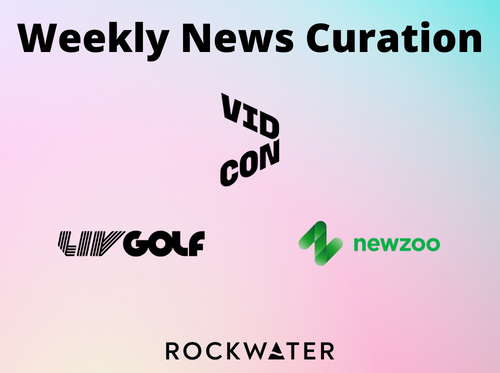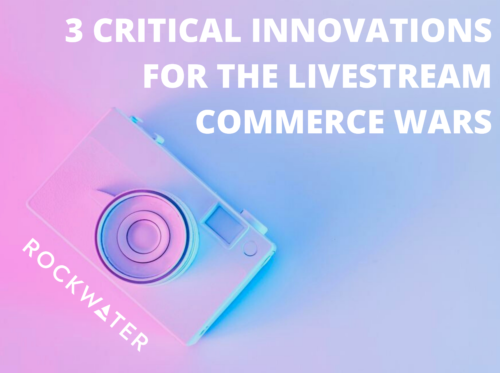The $1.7B Through Line Between Rent The Runway’s IPO and Lipstick King’s Livestream Sales
What We’re Reading
5 themes/ articles + RockWater analysis to make you a better investor and operator.
———
Rent the Runway’s $1.7 Billion IPO
CNBC, 10.27.21
- Rent the Runway to use capital raised through IPO for international growth and launching new categories, including home goods, shoes, luxury, and kids
- Recent performance
- 2019: 134,000 subs, $257 million revenue, $154 million net loss
- 2020: 55,000 subs, $158 million revenue, $171 million net loss
- 2021: 112,000 subs
- Rent the Runway is using a new resale model to funnel customers into subscription offering
- According to CEO Jennifer Hyman, “This pandemic pushed us even more as consumers into sharing models and into valuing experiences over ownership. We’ve seen that in our customer base.”
The RockWater Take by Chris Erwin
Between the Casper and Warby Parker IPOs, it’s been helpful to better understand the financial performance of venture-backed DTC retailers. The challenge of driving continued revenue growth while paid social channels increasingly saturate is no surprise, and explains the poor margin profile of many DTC companies. In the interest of promoting a better DTC future, some additional thoughts and questions…
- Based on our exec interviews, best-in-class DTC brands need gross margins above 50-60% to ensure sufficient paid marketing budget, which for a high-growth DTC brand is 20-30% of revenues. This enables rapid paid media and content bets, learnings, and growth. Totally agree with RTR that less than 10% of revenue for marketing since founding is not ideal
- I’d like to know more about RTR’s use of its resale model to funnel customers into its subscription offering. What does that mean exactly? Is it that resale is taking off over the past year (see recent RealReal, ThredUp, Poshmark IPOs and Depop M&A), so a resale product means more site traffic, when can then be steered? Or is the bottom of the RTR resale purchase journey, perhaps via a loyalty or post purchase program, being thoughtfully integrated into a subscription offering? Other?
- Great to see RTR ramping up subs to 112k in 2021, from the huge drop to 55k in 2020. Curious to what price points those new subs are at, and with what promotions. What we don’t see in that number is (1) a potential increase in upcoming churn from promotion roll-offs, and (2) lower ARPU. But I get RTR’s strategy for now, which is to get customers back using the platform. Just be wary those subs are likely not as high quality as those before.
- I dig the interest in kids category expansion. I wonder what products they’re focused on? And will kids be involved in the purchase journey, or will it be for kids, bought by parents? We wrote about Nike’s kids shoe subscription service back in 2019, which was a cool idea and included co-purchase journeys, but the initiative was eventually terminated based on lack of consumer interest.
———
Recent Livestream Commerce Developments
- Pinterest Gets Into Live Shopping with Launch of Pinterest TV — TechCrunch, 11.1.21
- YouTube Announces Stream & Shop Series — Digiday, 10.19.21
- China’s Lipstick King Sold an Astonishing $1.7B in Goods in 12 Hours — Business Insider, 10.22.21
The RockWater Take by Andrew Cohen
Last month we saw some big capital raises from the hottest emergent livestream shopping platforms, NTWRK and Whatnot (the latter valued at $1.5 billion). Now, as holiday shopping season approaches, we’ve begun seeing the major social incumbents unveil some of their plans to conquer the US livestream shopping market.
Last week we also saw a reminder of why these US companies are so eager to win the “Livestream Shopping Wars” in the US: more astronomical revenue numbers from China. During lead-up events to promote their major shopping holidays, two of China’s most influential creators gave the US market something to aspire to…
- The “Lipstick King” drove $1.7 billion in sales during a 12-hour stream that reached 250 million viewers
- Viya drove $1.2 billion in sales during a 14-hour stream
The Chinese livestream market is currently worth roughly $300 billion, while the US market is valued at $11 billion. But as we continue to see more eye-popping numbers like that from the Chinese market, we’ll continue to see US companies invest more and more to replicate their success.
———
PayPal Abandons Pinterest Takeover After Its Shareholders Balk
Wall Street Journal, 10.25.21
- PayPal was rumored to be in late-stage talks to acquire Pinterest for $45 billion “mostly in stock”
- PayPal is trying to expand beyond its roots as an online-checkout option and become more of a service that helps users find new items online that they might like to buy
- PayPal’s board and management decided to back away after determining an agreement would be unlikely
- PayPal’s shares declined by 12% in the days following initial reports of deal exploration
The RockWater Take by Michael Booth
I’m disappointed. After PayPal’s series of acquisitions over the past year — Honey (coupon searching browser extension), Happy Returns (network of 1,200 e-commerce return fulfillment centers), and Paidly (Japanese BNPL) — a social commerce app would have been the ideal focal point to rally all of those assets around.
Pinterest is already laid out as a virtual mall, with a high purchase intent user base. Had PayPal figured out the integration complications, the UX would have looked like this: 1. Pinterest enabled social / interest graph product discovery → 2. Honey enabled frictionless checkout with guaranteed lowest pricing → 3. Paidly enabled BNPL purchase financing → 4. Happy Returns enabled shipping distribution / inventory management.
To date, this would have been the best end-to-end social shopping experience available in the States.
While this particular deal got scrapped, I expect we are in store for more ambitious social commerce rollouts from fintech. Over the past year Klarna has: acquired Hero (livestream shopping integration), announced an original content studio in partnership with Lady Gaga, and debuted an A$AP Rocky product curation. Likewise Square: acquired Tidal (Jay-Z’s music streaming platform), acquired Afterpay (large BNPL), and announced the debut of Cash App studios (creator fund for independent musicians)
———
Recent NFT Developments
- Patreon Confirms it’s Exploring Crypto as a Way for Creators to Make Money — TechCrunch, 10.29.21
- Live Nation Launching NFT Ticket Stubs — Benzinga, 11.1.21
- Fanatics’ Candy Digital NFT Venture Hits $1.5B Valuation After New Investment — Sports Pro Media, 10.22.21
The RockWater Take by Michael Booth
Platforms are leaning more into NFTs than ever before. The viability of NFTs as a concept was proven out this past year, with market leaders like NBA’s Top Shot selling over $700 million of basketball highlights. Creators have shown interest with some minting their own NFTs and others going as far as minting their own cryptocurrencies. That said, NFT’s overall adoption by creators has been very small, in large part because creators are busy and it is esoteric for them to create their own NFTs. Creator NFTs also inherently live outside of the platforms that their audiences use to find content. A big business challenge.
Making easy on-ramps for NFTs to live “on-platform” is a no-brainer. For creators, there is now an easier route to quickly launch product and migrate audience down the purchase funnel. For audiences, there is now a clearer value prop for what the underlying NFT offers and a broader set of applicable use cases.
Web 3 concepts are exciting, yet still seem ethereal to the layman. Seamless on-ramping from large scale social platforms will be instrumental in driving creator / audience adoption.
———
Recent Creator Economy Developments
- Cameo Acquires Fan Merch Platform Represent — TechCrunch, 10.25.21
- Spotify Partners with Shopify to Add Merch to Artists’ Profile — TechCrunch, 10.20.21
- Netflix Partners with Walmart to Sell Exclusive Merchandise — Bloomberg, 10.11.21
The RockWater Take by Alex Zirin
For a long time, we’ve been waiting for incumbent, legacy social media platforms (Facebook, Twitter, Instagram) to figure out how to connect their user acquisition prowess with tangible monetization initiatives for their creators. (Here at RockWater, we refer to this as the Disjointed Creator Monetization Funnel.) Of course, Cameo’s acquisition is not the first move we’ve seen from platforms looking to build out their monetization stacks.
As more creators find ways to diversify their revenue streams, and more social platforms work to unify their content and monetization strategies, I anticipate that we’ll see many more M&A deals and partnerships in content/creator merch. In the short term, I think we’re most likely to see deals from other media distributors (Apple TV+, Hulu, ESPN, etc.) that look similar in scope to what Netflix has announced.
And of course, there’s a great take on Cameo’s deal in ModernRetail from our fearless leader, Christopher Erwin: “Integrating content and commerce is a no-brainer.”
———
If these insights are relevant to projects you are thinking through, ping us here. We’re always excited to riff through ideas!



